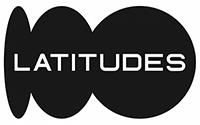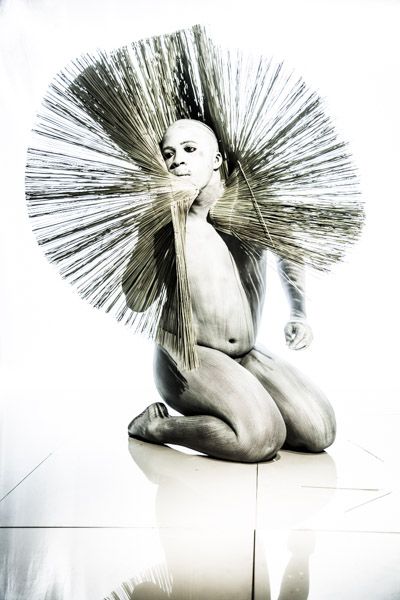Untitled XI
Store Review (0)PRESENTED BY : Nel
| Edition Size | 5 |
|---|---|
| Medium | Archival print on hahnemuehle fine art cotton rag |
| Height | 86.00 cm |
| Width | 62.00 cm |
| Artist | Lisime Sibeko |
| Year | 2017 |
Oupa Sibeko is an interdisciplinary performance artist whose work moves between performance installation, photography, film and community based activism. Oupa’s playful, often humorous and at times satirical approach deals with the matter and politics of the body as a contested site of labour, and as an object that assimilates the spirit of the moment and adapts to its environment. Enabling opportunities for affective and relational encounters using ritualistic performance and play, he seeks to critically engage approaches to the body, particularly the black male body, the history of representation and the ways in which certain subjectivities have been (and are) figured, (black) pain, (black) spectacle, (black) negation, and the ethical implications of reimaging and re-enacting pain.
Sibeko was shortlisted for the top 17 in the Henrike Grohs Art award 2020, awarded a Mail & Guardian top 200 and David Koloane award in 2019, and a Richard Haines all-rounded performer award by Wits University Humanities Faculty 2015. He has taken part in group and solo shows in Namibia at the National Art Gallery of Namibia, Wits TPO Gallery, Wits Art Museum, Room Gallery, Melville Art Project, Greatmore Studios in Cape Town, The Freezer Hostel and Theatre in Iceland and Art Room in Parkhurst. As an independent artist, Sibeko teaches and volunteers in schools and universities around Johannesburg, South Africa.
Oupa Sibeko writes.
BLACK IS BLUE
Black is Blue (2019-ongoing) is concerned with the widespread practice of using seawater for healing and spiritual purposes. Deriving from Nguni and other traditions, this practice is linked to the ‘people of water’, usually water-based diviners, for whom the sea is a realm of ancestors, a site for spiritual cleansing and grounding; the sea holds potential to heal and its curative powers live in the water. While in the past such practices occurred at the coast, with urbanization and industrialization, the practice has been adapted and now one can purchase bottles of sea water inland. The main purpose of this project is to describe and artistically explore beliefs and practices involving bottled seawater for spiritual, health and healing purposes.
Furthermore, the main purpose of this research is to present a counterpoint to canonical, conventional modes of knowledge by offering indigenous oral history as passed down onto me by my late grandmother. By describing and artistically exploring beliefs and practices involving the practice of bottling seawater for spiritual, health and healing purposes and bringing it inland by Nguni and other people of South Africa, this project is grounded in oral, spoken history that is personal, lived and embodied. This is no surprise considering Babalwa Magoqwana’s conception of grandmothers as “institution(s) of knowledge that transfer…not only ‘history’ through folktales (intsomi) but also ‘bodies’ of indigenous knowledge that store…transfer…and disseminate…knowledge and values”.[1] These ideas form the major conceptual, theoretical and aesthetic impulse of this project in particular from my Nguni upbringing. Southern Africa comprises two main ethnic or linguistic groups, namely the Nguni and the Sotho-Tswana. Among both groups, water occupies a central position in belief systems. In addition, Kiernan (1990:106), “it seems that for the Zulu, water, as the origin of living things has traditionally possessed some sacred powers and curative properties”.
I use my body to create artworks in dance, performance, film, installation and photography. All of these mediums draw directly on the deep relationship I have built with my body through dance training, research and performance. My work is often sourced from deeply personal events in my own life. I have a special interest in self-invented rituals, objects (found and bought) and natural `resources’ (nature’s) influence on the performing body. This fluidity allows me to make work that cuts to the heart of what it is to be a suffering, struggling, striving, exploring and ever hopeful human.
It is through African indigenous knowledge that I come to understand and unpack oceanic humanities. It is also through African indigenous knowledge that I locate and borrow key elements of performance especially in relation to ritual and communal performances, theatre in the round, site-specific performances and the exchange of cultural knowledge in a shared communal space. This is important as it transmits and conserves the accumulated wisdom of the family, the clan and the ethnic group (Nguni) by allowing my artistic practice to be morphed and reshaped, almost in a way that bottled seawater takes on the shape of varying vessels. After all we cannot study Africans in the US or Brazil or Jamaica without some appreciation of Africa as the source (Gilroy 1993:189).
I am of the view that the sea inland created through bottled water has encouraged people to rewrite history, to write their own individual history, to understand an independent nation’s history writing itself. “In orature, godhood is treated as the ideal spiritual expression of nature and nurture. The major generic elements of orature – riddle, proverb, story, song, poetry, drama and dance – are an imaginative attempt to explain the universe” (Ngugi 2010:06).
Black is Blue (2019-ongoing) is an invitation for people of all ages to be immersed in a sensory exploration in a durational performance with Sibeko lying on two deck-chairs facing down with four fish hooks attached to his back in a blue lit room, with a floor covered in sea salt. The work inspires people to embrace the myth of an inland sea as a way to rethink the urban space, who belongs in it and how they occupy it. Through a comical yet thought-provoking video of a man fishing from a puddle on the streets of Johannesburg, Black is Blue(2019-ongoing) calls on humanity to return to the sea to repair wounds and for spiritual grounding.
As an extension of this ongoing research, Black is Blue (2019-ongoing) becomes a meditation on play. It uses ideas and methodologies of play and performance as ways to reflect on “improvisation”, “make-believe”, and “staging” as modes of survival, and ways in which people have historically recreated cultures through embodied, reflexive, and collaborative ways. The notion of “play” within the performance and installation goes beyond the assumed frivolity associated with the term, and instead activates multiple levels of reading, where the presentation of an embodied knowledge about the ocean is centralized, and the mapping out of how seawater travels inland is sketched out through “threads” that are present yet not immediately visible or readable. Central to this work is also the body that transport this bottled seawater inland, as well as hinting at materials related to divinity. It is a process of “fishing” for information that is “unwritten”, yet present.
Black is Blue (2019-ongoing) is the naked testing of academic language beyond the book onto a stage. In challenging existing modes of academic research, a central concern of the project is to present different ways of knowing seawater, in order to shift away from the modes in which the most prominent discourses around sea water (oceanography, science, and engineering) are spaces in which water is objectified as something alien and far from the human. This Eurocentric bias is imperialistic in separating for instance the relationship Africans have with their ocean/environment. The work instead presents one of multiples of ways of consuming history in the contemporary, and in this “playing out” of Histories, the material employed, as well as the audience members, hold the potential to reactivate moments of the past, and the tension between humor and violence is constantly present.
Black is Blue (2019-ongoing) cannot be read through a single temporality as the crux of the work lies in the complexity of the contradictions, congruencies and differences evident in the work in relation to my and other’s relationship to the sea. These contradictions and differences deeply reflect the divided times we live in. However, the work insists and invites us to consume and invest in a playful methodology that surfs the different materials. The work’s practice of connection is rejoining the realm of pain with that of pleasure and this is important in understanding that the work is situated between several discourses, issues and agendas in relation to different ways of knowing water.
[1] See Magoqwana’s chapter in the book, Whose History Counts: Decolonising Precolonial African Historiography. In the book she looks at oGogo as troupes of knowledge, African indigenous knowledge.










